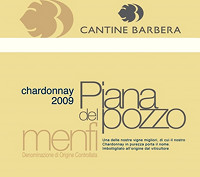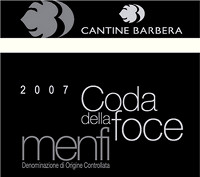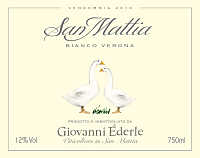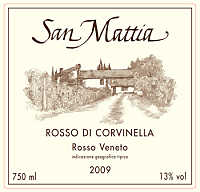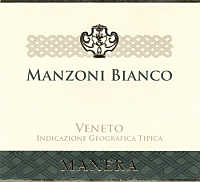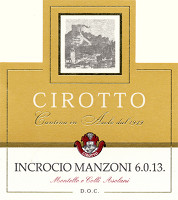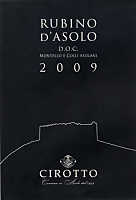|
Wine and chemistry are among the most debated subjects of the world of wine. In
particular by consumers who, legitimately, are concerned about the genuineness
of what they pour in their glasses. Sometimes we forget wine is, in any case,
the result of a complex chemical process in which the many elements making it
undergo radical changes, however essential for the making of the beverage of
Bacchus. In other words, Nature makes use of chemistry to transform grape juice
into wine. Frequently, this is undeniable, man does the same to control certain
processes and to shape the wine in order to give it specific qualities
and characteristics. We should remember the natural process of vinification is
to transform grape juice into vinegar: man makes use of technology and chemistry
in order to avoid this unhappy end.
The need of controlling the vinification process does not however justify the
abuse of chemistry and technology. The limit is not always defined by the good
sense of the one making use of it, but also by the respect for those who want to
drink wine with awareness without side effects for their health. Last but not
the least, respect for vine, grape, wine and the millenary culture and tradition
they represent. Making a wine with the least number of faults is of course
desirable and a fault, no matter it is “natural” or not, is however a fault
lowering the quality of wine. On this regard it should be remembered, in order
to reach this goal, it is however and always indispensable the quality of the
raw matter: grape. If it is true from a quality grape it can be produced a great
quality wine, from bad quality grapes it can be obtained - in the best case and
thanks to the skill of the wine maker - a mediocre wine. The difference between
a good wine maker and a less good one, it is not what he or she can make in the
winery, indeed what he or she can obtain from the vineyard, alone or with the
fundamental help of the agronomist.
Among the many helps used for the production of wine, the most used one
certainly is sulfur dioxide. Not only the chemical element mainly used in
enology, but also the most debated one. Using the least possible quantity of
sulfur dioxide in wine certainly is wished - and when this happens, the result
can be greatly appreciated in the glass - and it should be said that completely
eliminating its use in enology is virtually impossible. Nature, with its
goodness, adds sulfur dioxide to wine during fermentation, as this simply is a
byproduct of the activity of yeast. Of course it is a lower quantity than what
man - by law or by need - adds to the must or to the wine during production. In
other words, a wine without sulfur dioxide - or simply, with no sulfites -
cannot exists. It can of course be limited its use, but it is not however
possible to completely eliminate it from wine.
Sulfur dioxide, no matter how it is being used, allows wine makers to stabilize
the wine, to avoid the development of certain faults, including oxidation. It
should also be noticed sulfur dioxide is widely used in food industry, sometimes
used in a higher quantity than what is permitted by law in wine. According to
European laws currently in force, the maximum quantity of sulfur dioxide which
can be used for the production of wine is 150mg/l for red wines and 200 mg/l for
white and rose wines. The maximum quantity permitted in sweet wines is quite
higher, currently set to 400mg/l. It should be noticed these represent the
maximum permitted quantity: in most of the cases the quantity of sulfur dioxide
found in wines is lower. Finally, it must be said sulfur dioxide is not however
healthy for man and, in certain cases, it can cause important allergies in
subjects particularly sensitive to this gas.
|
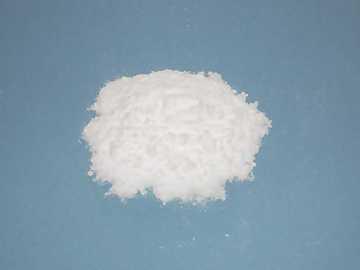 | |
| Crystals of potassium
metabisulfite: the most common way to add sulfur dioxide to wine and must | |
|
On this regard, it should be noticed the World Health Organization (WHO) has
recommended a maximum daily intake of sulfur dioxide of 0.7mg per kilogram of
body weight. A quick calculation and considering a male subject with a 80
kilogram of weight, the maximum daily intake equals to 56 milligrams. This means
that, in case in a white wine has been used the maximum quantity set by law,
half a bottle of wine - 375 milliliters - is enough to exceed the maximum daily
intake. Wine and, not to forget, drinks and foods containing low quantity of
sulfur dioxide are healthier and should however be preferred. Talking about
limits, an intake of 1.5 grams of sulfur dioxide for kilogram of body weight is
considered by World Health Organization as lethal. In particularly sensitive
subjects, sulfur dioxide can cause migraine as well as disorders and allergic
reactions.
Sulfur dioxide easily bounds with oxygen and this is one of the reason why it is
being used in enology, therefore avoiding the oxidation of wine. In case the
quantity of sulfur dioxide can be of concern for the health, therefore wishing
to get the least possible quantity, its predilection for oxygen can
certainly be useful. In fact, by oxygenating the wine before consumption, the
quantity of sulfur dioxide can considerably be lowered. The quickest and most
effective way is to swirling the glass - by allowing the wine to wet the broader
possible surface - an operation which can also free 30-40% of sulfur dioxide
contained in a wine, as well as favoring a better development of aromas. The
same result can be obtained by decanting a wine - a “traumatic” operation to
be done only in case a sediment is present - whereas it is completely useless
uncorking a bottle some hours before consumption.
The reasons why sulfur dioxide is used in enology are many. It has an antiseptic
effect, therefore added to the must it works a selection of bacteria and yeast
by eliminating the least resistant ones while ensuring, at the same time, a
better stability. The antiseptic action of sulfur dioxide therefore works a
selective action on yeast which will ferment the must, while remembering that -
in general terms - bacteria are less resistant to this gas than yeast. Sulfur
dioxide is useful during the decanting of the must, as it can delay the activity
of yeast, therefore preventing the start of fermentation while favoring the
decanting of solid parts. It favors a better extraction of coloring substances
in red grapes thanks to its property of making the skins more permeable.
Finally, as already said, it has a very good antioxidant effect thanks to its
property of easily bound with oxygen, therefore avoiding its bond with the
substances of must and wine.
Sulfur dioxide can be added to the wine and must in different ways. The most
traditional and old method - as well as the least controllable one in terms of
quantity actually added - consists in burning a tablet of sulfur inside the
container which will be used for wine or must. The burning of sulfur produces,
in fact, sulfur dioxide. Modern enology, in order to rigorously control the
quantity of added gas, makes use of other methods, of which the most common one
consists in using potassium metabisulfite. This substance, having the aspect of
white salt, when it gets in contact with the must or wine produces sulfur
dioxide in a quantity of about 0.55 grams per each added gram. Other methods of
adding sulfur dioxide make use of liquid solutions or cylinders containing this
gas that, it should be noticed, is colorless however easily recognizable for its
characteristic pungent smell.
For the sake of a better information, it should be said in recent times they are
trying to find alternatives to the use of sulfur dioxide in enology, not only by
limiting quantity, but also by completely avoiding its use. Some of these
alternative attempts have produced very promising results that make us think of
a wine making future without adding sulfur dioxide, while remembering - in any
case - this gas is however produced during vinification. Wines produced with
these techniques are now available in the market, usually emphasizing in the
label they are wines with no sulfites: indeed it would be more correct saying
they are wines “with no added sulfites”. The quantity of sulfur dioxide
produced during vinification is however lower than every possible adding done
for wine making purposes and the production of a wine with no added sulfites
certainly is wished, last but not the least, for the lower effects on health.
According to an organoleptic point of view, sulfur dioxide can drastically
change every sensorial aspect of wine. Some effects certainly are positive,
whereas others are completely negative, effects which generally happens with its
bad use, in particular with the excess. In case it is properly used - and this
does not mean using it at the maximum quantity set by law, and however using a
far lower quantity - it gives the wine a better stability over time. Recognizing
sulfur dioxide in wines is very simple, in particular to the nose: when used in
excess or improperly, it will always be perceived the unpleasant and typical
smell of sulfur which tends to cover everything else. Excessive quantity of
sulfur dioxide also produces an accumulation of acetaldehyde that, when
ingested, causes disorders for the health and it is also more toxic than ethyl
alcohol. Moreover, the excess of sulfur dioxide causes the formation of hydrogen
sulfide and mercaptans, giving the wine an unpleasing aroma of garlic and rotten
eggs.
The preservative effect of sulfur dioxide ensures the wine a longer life, in
particular for its antioxidant effect, therefore preventing the alteration of
aromas and of taste with typical oxidized characters. Talking about wine's
appearance, sulfur dioxide stabilizes color, in particular in red wines,
therefore favoring the extraction from the skin during maceration and
fermentation. The aroma of wines properly treated with sulfur dioxide is
generally “finer” thanks to its selective effect on yeast and bacteria,
therefore allowing a more regular and controllable fermentation. The correct use
of sulfur dioxide also reduces the quantity of volatile acidity - which can be
perceived with a more or less intense aroma of vinegar - thanks to its
antiseptic action against acetic bacteria. Antiseptic and antioxidant effects,
in case this gas is properly used, allow a longer keeping of the original aromas
of wine. Finally, during its volatilization, sulfur dioxide helps the perception
of certain fruit aromas.
The excess of sulfur dioxide - according to the sensitivity for this gas, in
some subjects already perceivable in a quantity of 20-30mg/l - gives the wine a
sulfurous flavor, hiding the aromatic and gustatory qualities of wine.
The correct use of sulfur dioxide improves the taste of wine, not because of its
organoleptic characteristics, indeed for its preservative effect, preventing
oxidation and the development of bacteria. Finally, it should be noticed
European laws requires the indication in label of the mention “contains
sulfites” in all the wines in which the content of sulfur dioxide is higher
than 10mg/l. This mention is virtually found in every wine, also in those
produced with no added sulfur dioxide, as yeast, during fermentation and
according to the type, can produce a variable quantity of this gas from 6 to 40
mg/l. In this sense - and unjustly - law makes no distinction between a wine
produced with no added sulfur dioxide and one containing the maximum quantity
permitted by law, that is 200mg/l for white and rose wines, 150mg/l for reds.
|


